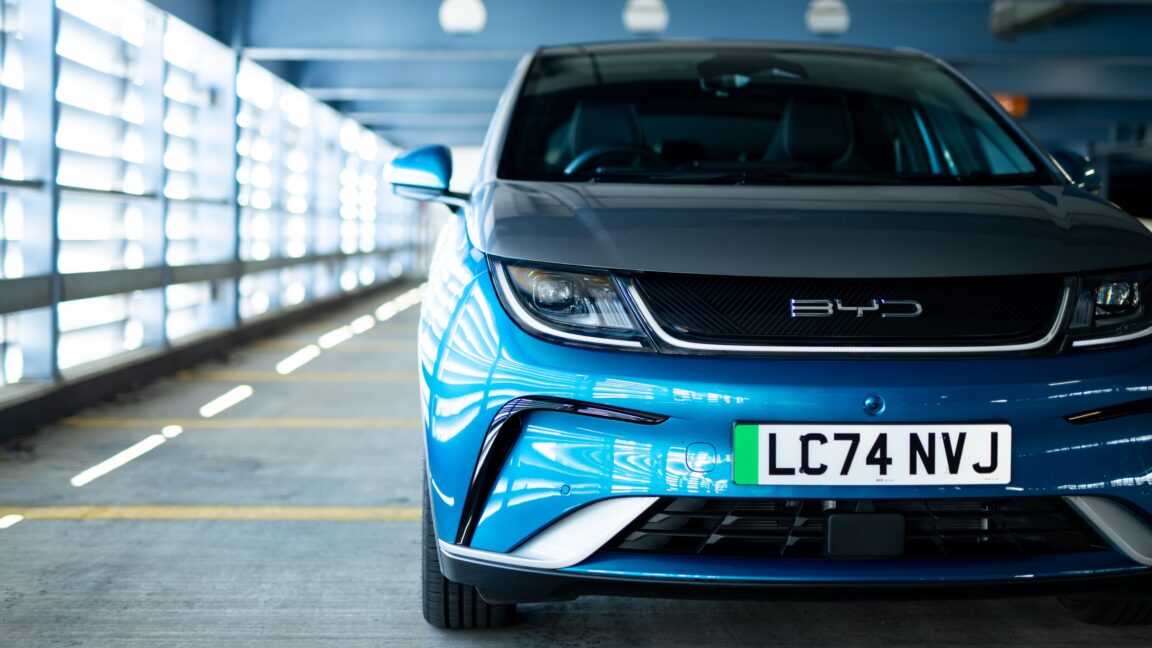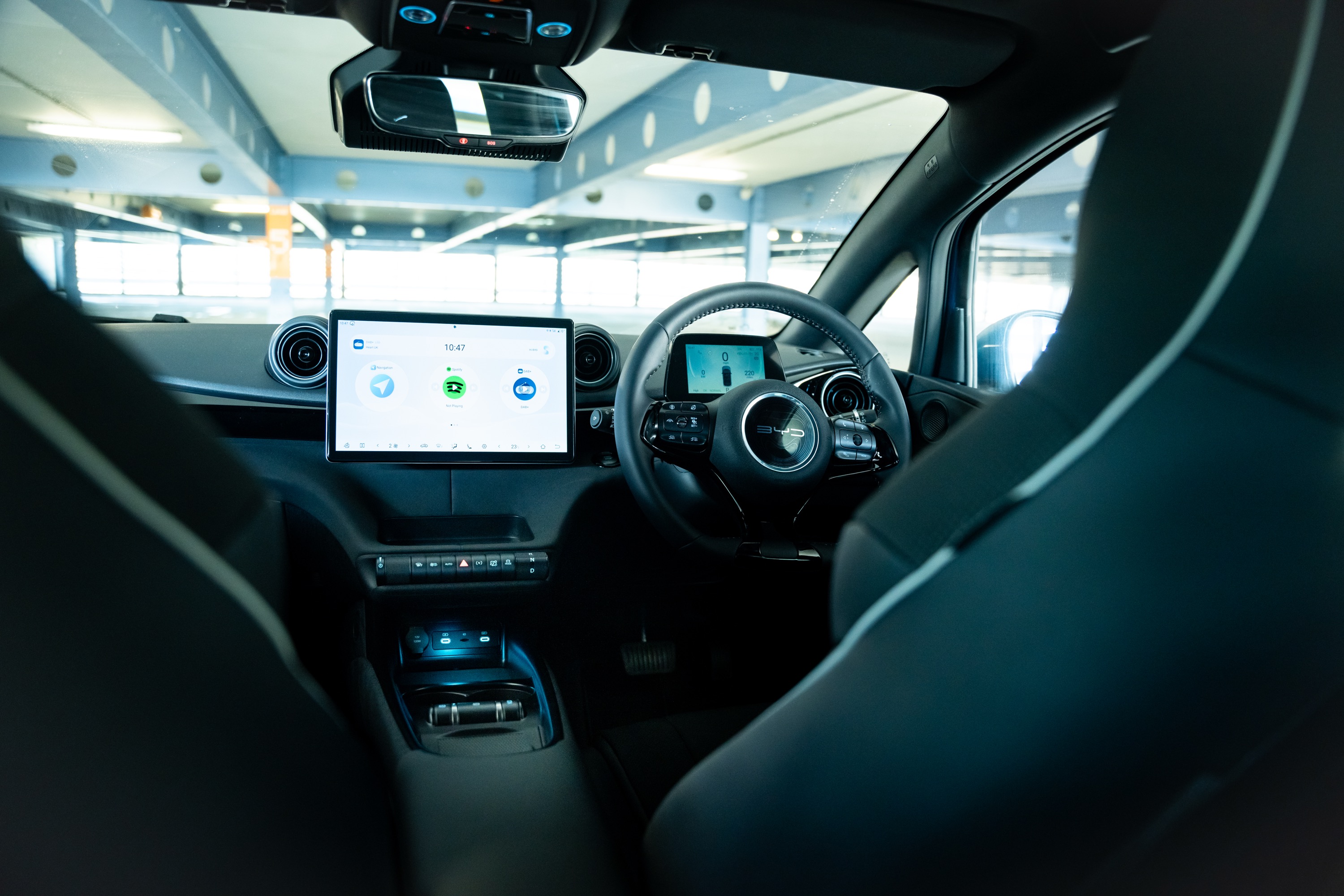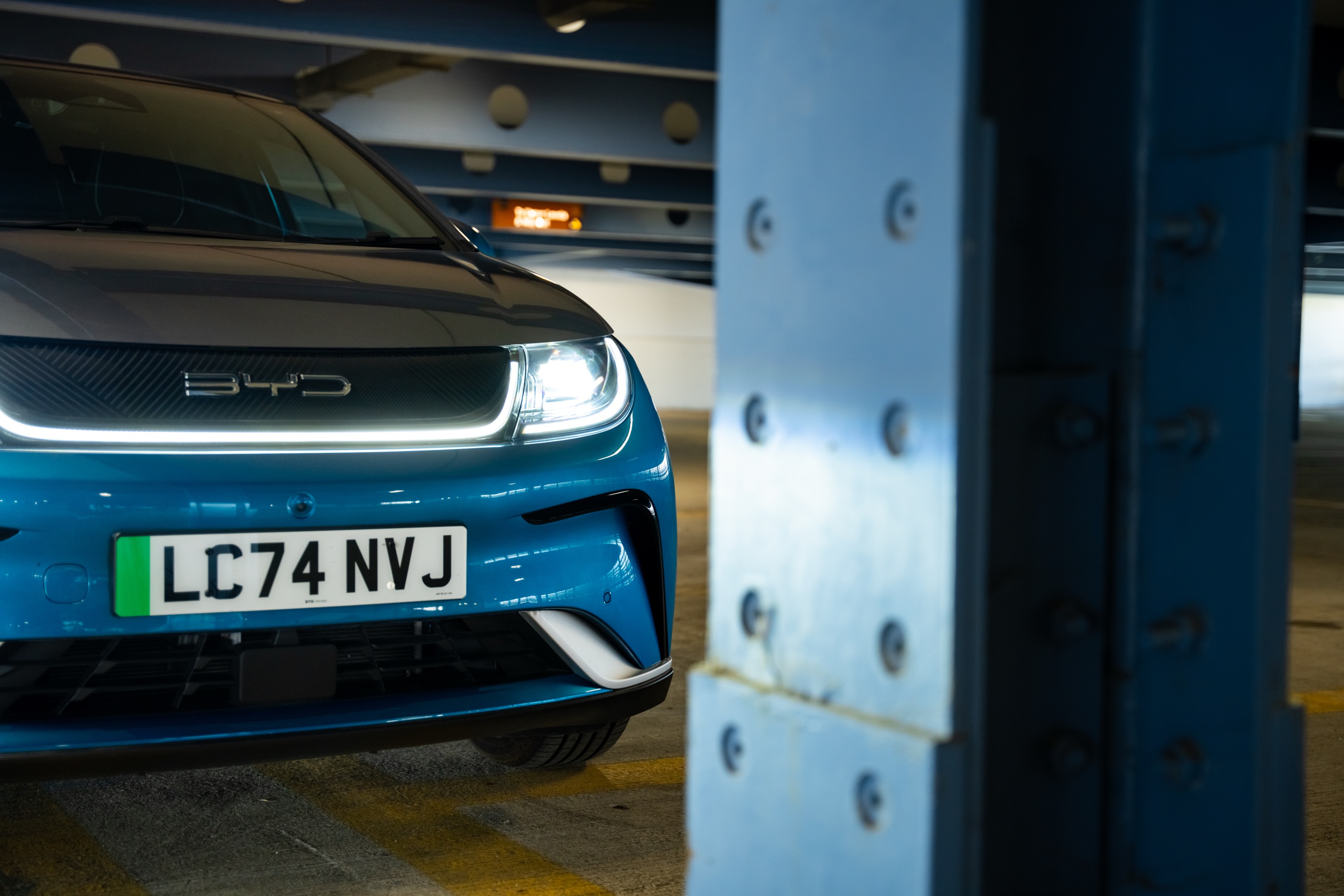
Credit: Alex Goy
China's BYD doesn't mess around. It began life as a battery company that eventually realized it could branch out into electrified cars. And so it did. Today, BYD is outselling rival giants and has cars on the road almost everywhere, except the US. Its eyes are firmly set on conquering the electric vehicle sector, but it will sell you a hybrid if you're not quite ready to take on life with a battery EV full-time.
Being a thoroughly modern car company, BYD will sell you cars in various shapes and sizes and across a wide price range, though the bigger you go, the higher the price tag becomes. With popular sentiment starting to turn against this second gilded age, the super-lux stuff won't suit everyone. That's where BYD's smallest car, the Dolphin, comes into play.
Small is, of course, a relative term. An original Issigonis Mini it is not, but it makes a Range Rover Evoque look big. It's tall, but it's narrow enough that it will fit in a European parking space with room to open the doors. You won't miss it in a parking lot, either.
Ocean Aesthetics
BYD's "Ocean Aesthetics" design language is a mixed bag. On its larger cars, it flows rather neatly; here, it's a touch awkward. The fact that you can get the Dolphin in pale pink or two-tone combos helps it stand out further. The rear light graphics are pleasingly twisty, but the ‘Build Your Dreams' motif stamped on the back received such backlash when BYD launched in the UK that the company said it would stop putting its well-meaning but saccharine company motto on the back of cars.
The Dolphin is tall because it has to be. On the floor is a Blade Battery, BYD's proprietary battery tech. It forms part of the structure of the car and is super-stiff, and it can be pierced with a nail and not go pop. As party tricks go, that's a neat one. There are two battery sizes to choose from: a 44.9 kWh unit or, as tested, the 60.4 kWh pack, which will get you 265 miles (426 km) on a charge, according to the WLTP scheme, while feeding a 201 hp (150 kW) motor.
Zero to 62 mph (0–100 km/h) takes 7.0 seconds, and the Dolphin tops out at 99 mph (160 km/h). DC fast charging is capped at 88 kW, or 65 kW for the smaller battery, which means it takes 29 minutes to get from 30 to 80 percent state of charge. The performance sounds rather hot hatch-y until you realize the top-spec car weighs 3,655 lbs (1,658 kg), which is a lot for a family hatchback.

It's quite dark in here.
Credit: Alex Goy
The interior is fine. There are plenty of neat design quirks, like funky door handles and swoopy surfaces, that make being in there rather pleasant. It's called the Dolphin, so you can't expect it to take itself too seriously, but it's refreshingly fun without seeming tacky. Drivers get a 5-inch display for speed, range, etc., and while it's a bit on the small side, it's not the end of the world. Everything else is run through a 12.8-inch touchscreen in the center of the car.
This screen has a party trick
It's not any mere rectangle, though; it rotates. You can have your map, apps, and whatever else in portrait or landscape at the push of a button. Unless, sadly, you want to use Apple CarPlay. It's landscape-only for that. It's fun to show people that you have a wobbly screen, but after messing with it a couple of times, you'll find your orientation of choice and keep it there.
Rear passengers are taken care of, as are the tall. There's a 12.2 cubic foot (345 L) trunk, which isn't the biggest in the world, but it'll take a small family's weekly shop and the usual household "stuff" without issue.
All in all, on paper at least, it seems like a pleasant thing that can fit into most families' lives without too many issues (so long as they have a home charger).
It's as pleasingly quick off the line as its numbers suggest, which helps in city traffic, and its electric insta-torque means overtaking on the highway isn't an issue, either. Of course, there are drive modes to play with—Eco, Normal, Sport, and Snow—but to be honest, leaving it in Normal and cruising around is probably what you'll end up doing the most. It doesn't sap power at an alarming rate, nor does it dull the controls. Throttle response is smooth, and brake regen isn't too grabby, either.
The Dolphin's steering is unremarkable. You won't get out of it and remember how eager it was to kiss an apex on the way home from Tesco, but you also won't compare it to that person you know whose handshake is so weak it makes you shudder. Same goes for the ride—in a car like the Dolphin, you're not looking for sharpness or fogginess but a happy medium to go about your day fuss-free, and that's what you get here.

Would you buy one if it came to the US?
Credit: Alex Goy
The rotary dial gear lever in the center stack isn't the slickest to use, but it gets the job done once you find your groove with it, and the reversing camera is pleasingly high-resolution and huge on the infotainment screen. As you'd expect, it's quiet almost everywhere you take it, but on the highway, the wind noise can get a bit much from time to time. Oh, and whatever's in the chemical makeup of BYD's cabins, its new car smell is so acrid I can almost chew it (this has happened in more than one BYD).
With a starting price of £26,205 ($34,800) in the UK, it's not the most expensive EV out there, and its size puts it up against the likes of the VW ID.3, MG4, and Renault 5, which are all perhaps a little better resolved and come from legacy brands (MG half-counts).
Will buyers enjoy driving the BYD Dolphin? Probably not. Will they hate driving it? Certainly not. It'll be a handy ride to get through the day-to-day fuss-free. And it's very good at doing just that.

-
 C114 Communication Network
C114 Communication Network -
 Communication Home
Communication Home


